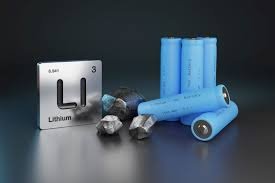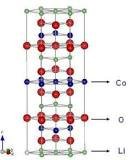Lithium Battery: A Cornerstone of Modern Technology
Lithium batteries:
And now, lithium batteries rule portable electronics from mobile phones to laptops to electric vehicles to renewable energy storage systems. Typical benefits of these batteries compared to other battery technologies (lead acid and nickel cadmium) include high energy density, low weight and cycle life. This article also present the science of the lithium battery and different types, pros and cons, and some problems of its.
Science Behind Lithium Batteries:
Lithium Ion (Li-ion) batteries is a form of energy storage in batteries by means of electrochemical storage. In particular, a lithium ion battery including a porous septum between a positive electrode or a cathode and a negative electrode or an anode is provided as well as an electrolyte surrounding the porous septum inside the battery.During discharge, the lithium ions are transported from the anode to the cathode through the electrolyte, and it is the coupling of this transport to the production of current that the devices require.
In the charging method, the lithium ions are deionized in reverse manner that is from the anode to the cathode, just as mentioned above, the anode and the cathode of a lithium ion battery can have varying designs. The anode is graphite, and the cathode is often a solids lithium containing compound like LiCoO2. The redox is the electrolyte and used to help boost ion movement, while the separator serves to prevent it making an electrical connection between the anode and the cathode.
Types of Lithium Batteries:
Lithium-ion (Li-ion): The most utilized type of battery in the wrold that is applied across consumer electronics and electric vehicles.
Lithium-polymer (LiPo): Mobile known units due to their slim profile style flexible that are used in packaging these.
Lithium iron phosphate (LiFePO4): An improved and more stable type mainly applied in such areas as electric buses or energy storage.
Lithium-sulfur (Li-S): Another emerging technology that claim higher energy densities as compared to the current battery technologies but they are still facing problems in cycle life and degradation.


Advantages of Lithium Batteries:
1. High Energy Density
The energy density of lithium batteries is off course much higher than other batteries which has resulted into the increase usage of lithium batteries. These batteries hold more energy density per their weight and volume than all other categories of rechargeable batteries including the nickel-cadmium or the lead-acid batteries. This feature makes them suitable for portable electronics and electric vehicles because size and mass are considerations for these gadgets.
2. Low Self-Discharge Rate
The lithium batteries are characterized with low self discharge and this means that they do not discharge themselves even when they are not being used. The latter characteristic is especially helpful for those devices which are not used constantly but periodically, for example, electrically powered tools, or therapeutic equipment.
3. Long Cycle Life
In the cycle life aspect, Li ion batteries prove to be superior to other traditional chemistries of batteries that may only last up to several hundreds of charge/ discharge cycles though there are Li ion battery models that have been reported to last up to thousands of charge/discharge cycles before the capacity of the battery drops substantially. This not only allows the usage of devices to be extended thus lowering chances of having to replace the devices frequently but also saves costs of replacing the devices.
4. Lightweight
Lithium is one of the lightest metals, thus its application in the field of battery technology led to development of lighter batteries. This is particularly beneficial in those applications that require weightless like automotive industry especially electrical cars and aircraft industries.
5. Fast Charging
Lithium batteries remain one of the most demanded products due to their capabilities of being charged at a much higher rate as compared to the traditional batteries, based on their electrochemistry systems. This fast charging is extremely important in the case of electrical automobiles and portable units since it minimizes use time and thus makes the charging process even more convenient.
Applications of Lithium Batteries:
1. Consumer Electronics
The modern way of battery commonly found in majority of the electronics device like Home appliances, laptops, smart phone, tablets, W earable others. They are fully portable because they are small sized, they last such a long time, and they can fully charge up quickly.
2. Electric Vehicles (EVs)
The famous manufacturers that use Lithium-ion battery in EVs are Tesla, Nissan and Chevrolet because of the high energy density and durability of 3000 cycles at times. This creates a situation where the world is amassing towards renewable energy sources, all the while the use of electric cars and lithium batteries that is demand for, has also sky rocketed.
3. Renewable Energy Storage
Renewable energy generation where the power is stored on Lithium batteries by sources like solar panels and windmills. Lithium ion based energy storage systems provide availability of energy round the clock according to static situation when solar or wind power are not available.
4. Aerospace
The aerospace industry has also turned to lithium batteries for use right from small drones, to large aircrafts. Because of these attributes, they are suitable for use in areas where the weight will be a significant constraint.
5. Medical Devices
Lithium batteries are used in many medical and leisure applications including pacemakers, hearing aids, portable defibrillators and portable dialysis machines as well as in leisure products such as energy-efficient lamps, alarm clocks, toys and multimedia products and a host of others.
Challenges Facing Lithium Batteries:
However, like every other technology, lithium batteries are not without some challenges :
1. Safety Concerns
These lithium ion batteries are prone to overheat, which leads to a phenomenon known as thermal runaway which can burn the batteries, or even end up with a fire, or explosion. It is precisely this risk that has led to a great deal of effort devoted to making these batteries and their materials and their designs safer and their risk management systems better.
2. Raw Material Supply
Lithium batteries contain lithium, cobalt and other elements that are hard to come by and the mining needed for these resources can do harm to the environment and a society. For lithium batteries, the issue of critical raw materials is abated with rising demand.
3. Recycling
The problem here is that currently it’s one of the most expensive and technically difficult things to recycle lithium batteries. The technologies for recycling of the lithium batteries are being gathered as a unified effort while very little lithium batteries are actually recycled at the moment. With the improvement of recycling practice, the mere effects of lithium battery waste on the environment will be minimized.
4. Degradation Over Time
This type of battery also undergo degradation over time whereby, the capacity decreases with increasing numbers of charge-discharge cycles. While, they possess relatively high cycle life compared to the other types of battery, degradation issue still persist and this can be constrain for those applications which require lifetime battery durability like, electric vehicles.
The Future of Lithium Battery Technology:
The idea of developing a high energy density, a safe lithium battery and an environmentally friendly lithium battery from the next generation of lithium batteries is coming. Instead, scientists are exploring other types of materials such as solid state electrolytes to prevent overheating the batteries and extend the battery’s useful cycle. Turning to batteries, further works are underway in forming batteries from sodium, which is readily available but not lithium, and green materials.
Governments and corporations are also putting a lot of capital into recycling systems to meet the environmental problems of lithium batteries. Technological advancements in the electric vehicles, renewable energy storage systems and portable electronics will dominate the battery technology growth in the future.
Adtition Information:
Lithium batteries cannot be completely avoided in today’s world due to the functions it performs in portable electronics, laptop, and electric cars. It gives better or comparable power-to-volume and the power to the weight ratio, in addition to possessing a high cycle duration better than any of the other types of storage of energy. Lithium batteries with active materials are lithium ion batteries which include LiCoO2 containing lithium ions that transfer between anode and cathode compartment referred to as efficiency in charging and discharging. Therefore lithium batteries are the very core of portable electronics, renewable energy, and electric vehicles.
Lithium batteries are capable of being charged and discharged much faster along with their longer charge retention as opposed to other battery types. Hence, the interest in lithium batteries has been increasingly accelerating as more electric cars and renewable power facilities are being powered through the lithium batteries. These batteries are now in use in capturing energy prototypes from solar and wind inspired systems in efforts to stabilize power supply girds. Also, lithium batteries are widely applied in medical equipment, aerospace industry, and different consumer products because of its appropriate and effective characteristics.
Lithium batteries, however, also have its disadvantages some of which include; safety issues, availability of raw materials and recycling. Lithium batteries are known to pose a safety threat due to their tendency to overheat, and thus research is carried out to enhance safety through materials that are better and a good design. Lithium and other materials required to build lithium batteries are major issues with supply chain since high demands will exert significant pressure on natural resources. To recycle lithium batteries is also a complicated and expensive affair, although there are improvements ongoing to make this more sustainable going forward.
Conclusion
Lithium batteries are the most significant technological innovation in the energy storage systems and will remain so in future. Despite the fact that it is currently dangerous, its raw materials are scarce and, more importantly, the bottles are not easily recycles the experts posit that these problems are being worked on continually. In today’s world which is witnessing growth in the automobile industry, consumer electronics and renewable energy sectors, lithium battery technology is becoming the go-to solution for energy storage and is thus poised to become a critical technology solution of the modern technological world.











3 thoughts on “Lithium Battery: A Cornerstone of Modern Technology”